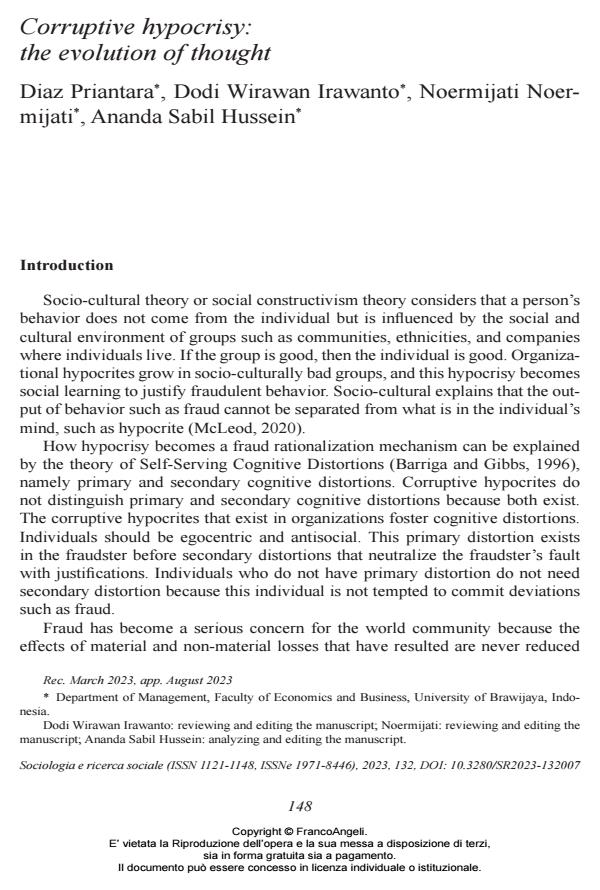Corruptive hypocrisy: the evolution of thought
Journal title SOCIOLOGIA E RICERCA SOCIALE
Author/s Diaz Priantara, Dodi Wirawan Irawanto, Noermijati Noermijati, Ananda Sabil Hussein
Publishing Year 2024 Issue 2023/132
Language English Pages 21 P. 148-168 File size 208 KB
DOI 10.3280/SR2023-132007
DOI is like a bar code for intellectual property: to have more infomation
click here
Below, you can see the article first page
If you want to buy this article in PDF format, you can do it, following the instructions to buy download credits

FrancoAngeli is member of Publishers International Linking Association, Inc (PILA), a not-for-profit association which run the CrossRef service enabling links to and from online scholarly content.
Diaz Priantara, Dodi Wirawan Irawanto, Noermijati Noermijati, Ananda Sabil Hussein, Corruptive hypocrisy: the evolution of thought in "SOCIOLOGIA E RICERCA SOCIALE " 132/2023, pp 148-168, DOI: 10.3280/SR2023-132007